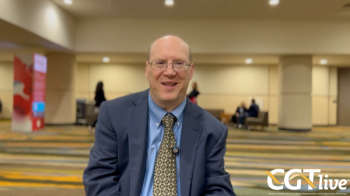
(P023) Role of Concurrent Systemic Therapy With Adjuvant Radiation Therapy for Locally Advanced Cutaneous Squamous Cell Carcinoma
Postoperative RT with or without systemic therapy was associated with acceptable disease-related outcomes at 1 year. Outcomes of patients managed with systemic therapy plus RT may be attributable to selection bias, since patients with more advanced disease receive systemic therapy.
Uma Goyal, MD, Nitin Prabhakar, Sun K. Yi, MD; University of Arizona
INTRODUCTION: Despite the prevalence of head and neck cutaneous squamous cell carcinoma (HNcSCC), few randomized trials have evaluated the optimal combination of therapy. Most patients with locally advanced (LA) HNcSCC undergo surgical resection, followed by radiation therapy (RT) with or without systemic therapy (ST). The purpose of our study was to perform an initial retrospective review of 19 patients who were treated for LA-HNcSCC with postoperative RT with or without ST.
METHODS: Nineteen patients with 20 LA-HNcSCCs from 2013–2014, who were treated at our institution with postoperative RT with or without ST, were reviewed. Eligibility was based on recurrent disease, nodal involvement, extensive or named perineural invasion, and bulky (T3/4) primary disease. Endpoints evaluated between groups receiving postoperative RT ± ST included locoregional recurrence (LRR), disease-free survival (DFS), distant metastases–free survival (DMFS), and overall survival (OS). Statistical analysis was performed using Student’s t-test.
RESULTS: All 19 patients were male. Median age was 71 years. Median follow-up was 10 months. All patients were treated with adjuvant RT (45–69.6 Gy in 15–35 fractions). A total of 11 patients received ST and 8 did not. Of those receiving ST, 42% received concurrent platinum-based therapy and 21% received concurrent cetuximab. Those receiving postoperative RT with ST vs without ST had a 9% vs 0% LRR (P = .4), 55% vs 100% DFS (P = .03), 82% vs 100% DMFS (P = .2), and 82% vs 100% OS (P = .2), respectively.
CONCLUSION: Postoperative RT with or without ST was associated with acceptable disease-related outcomes at 1 year. Outcomes of patients managed with ST plus RT may be attributable to selection bias, since patients with more advanced disease receive ST. However, they could also reflect an increased risk of death in patients receiving more intensive treatment. Further prospective clinical studies will be needed to validate outcomes and elucidate differences between LA-HNcSCC patients receiving postoperative RT with or without ST.
Proceedings of the 98th Annual Meeting of the American Radium Society -
Newsletter
Stay at the forefront of cutting-edge science with CGT—your direct line to expert insights, breakthrough data, and real-time coverage of the latest advancements in cell and gene therapy.

















































